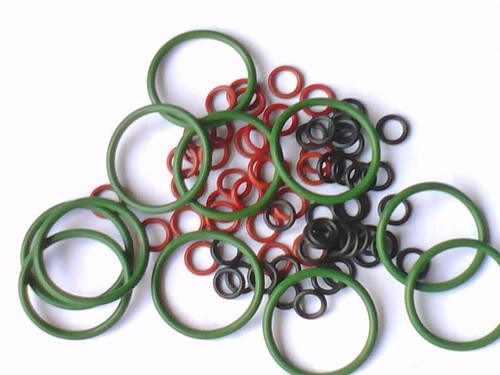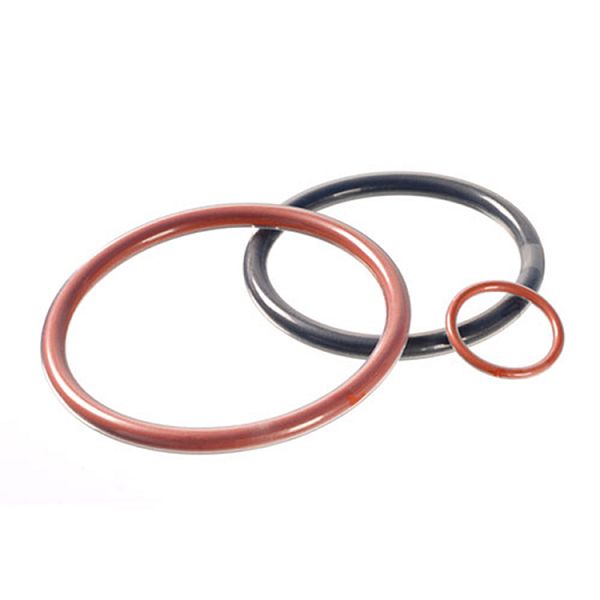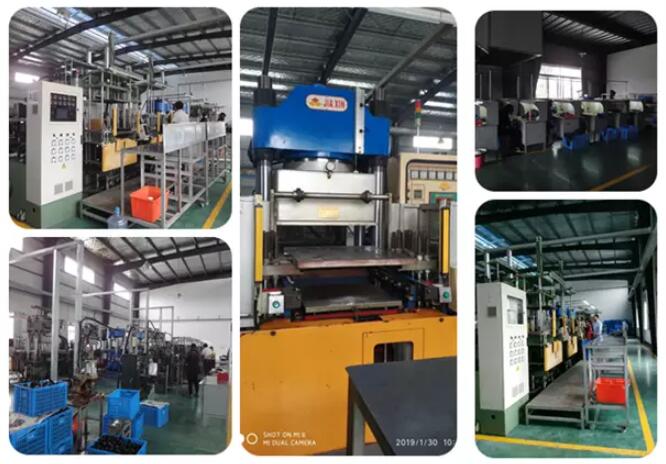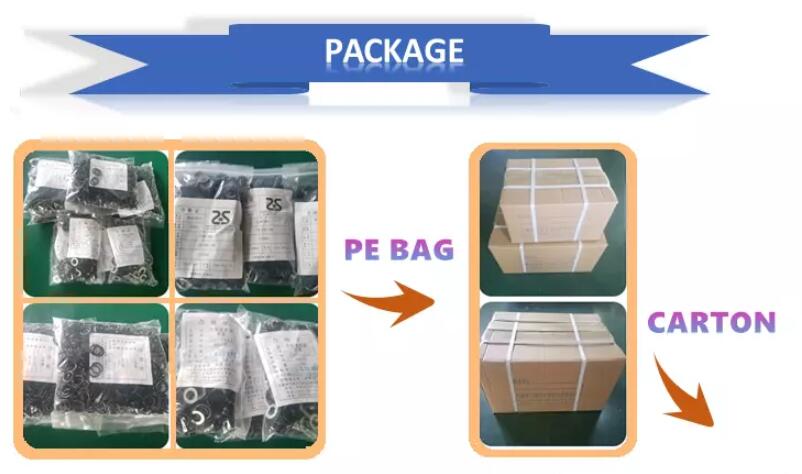How Does an O-Ring Seal Anyway?
Before we go over types of materials, hardness, sizes and tolerances of Nitrile O ring lets talk about how the Nitrile O Ring actually seals. Basically Nitrile Butadiene is used to block a pathway that fluid or air may escape through. Nitrile O rings Cord are usually put into a groove to hold them in place and then squeezed between two surfaces. When you squeeze the o-ring between two surfaces you are taking up the clearance and blocking the pathway that the fluid or air wants to escape through. When Nitrile Rubber O Rings are squeeze, the rubber has a memory. In Other words it wants to go back to its original shape. This memory is how the Nitrile O Ring seal under low to no pressure. When pressure is applied to the system this also helps the O-ring seal by pushing the o-ring against the groove wall opposite the direction of the pressure and forcing it expand perpendicular to the direction it is being squeezed by the pressure. Wow, what a mouth full. Lets see if we can explain that a little more simply. Take a water balloon, for all practical purposes water is not compressible. When you squeeze the water balloon between your hands it expand in the opposite direction. Go ahead and get a water balloon and try it. The O-ring does the same thing in the groove. Pressure squeezes the o-ring against the wall of the groove forcing it to expand in the opposite direction helping the o-ring to seal against the walls of the groove.

Standard O-Ring Material Applications
We offer the following six standard rubber materials in a range of durometer hardnesses to satisfy practically any service condition:
Viton / FKM: Fluorocarbon exhibits exceptional resistance to chemicals, oils, temperature extremes (-13°F to +446°F), low compression set, low gas permeability and excellent aging characteristics. Applications include: aircraft engines, automotive fuel handling systems, and chemical processing industries. FKM is also suitable for high vacuum applications. It is not recommended for exposure to ketones, alkalis, and Skydrol? fluids. Custom compounds are available with improved chemical and low temperature resistance.
Nitrile / NBR: Nitrile (Buna-N) is the most widely used elastomer due to its excellent resistance to petroleum products, operating temperature range (-40°F to +257°F) and one of the best performance-to-cost values. It's an ideal material for aerospace, automotive, propane and natural gas applications. Special Hydrogenated Nitrile (HNBR) compounds can improve resistance to direct ozone, sunlight, and weather exposure while increasing temperature range to +300°F.
Ethylene-Propylene / EPDM: EPDM has outstanding resistance to heat, water and steam, alkali, mild acidic and oxygenated solvents, ozone, and sunlight (-40oF to +275oF); but it is not recommended for gasoline, petroleum oil and grease, and hydrocarbon environments. This popular rubber compound is usually the first choice for low torque drive belt applications.
Fluorosilicone / FVMQ: Fluorosilicone (-75o to +400oF) combines the good high and low temperature stability of silicones with the fuel, oil, and solvent resistance of fluorocarbons. FVMQ is unparalleled for aerospace fuel systems, auto fuel emission control systems and to meet or exceed government, military, aerospace, automotive, industrial and commercial specifications. However, due to relatively low tear strength, high friction and limited abrasion resistance of these materials, they are generally not used in dynamic applications. They are also not recommended for exposure to brake fluids, hydrazine, or ketones.
Silicone / VMQ: In the Silicone family, you will find compounds which are superior as static seals in extreme temperature conditions. Standard compounds handle operating temperatures -85o to +400oF. Silicone compounds are popular in food and medical applications because they are very clean and do not impart odor or taste. Special Phenyl silicones can be used down to -148°F.
Neoprene / CR: Neoprene (-40o to +250oF) is reasonably priced and features good resistance to petroleum oils, ozone, sunlight and oxygen aging, relatively low compression set, good resilience and outstanding physical toughness.

FAQ:
Q: Can you produce as my drawing?
A: Yes, we can produce based on your drawing or sizes.
Q: How long is your delivery time?
A: Generally it is 1-2 days if the goods are in stock. or it is 10-15 days if the goods are not in stock, it is according to quantity.
Q: Do you provide samples ? is it free or extra ?
A: Yes, we could offer the sample for free charge but you need to pay the cost of freight.
Q: What express do you use to send the samples?
A: We usually ship samples by DHL, TNT, FEDEX and UPS. It usually takes 3-5 days to arrive.




Product Categories : O Ring > Nitrile O Ring
